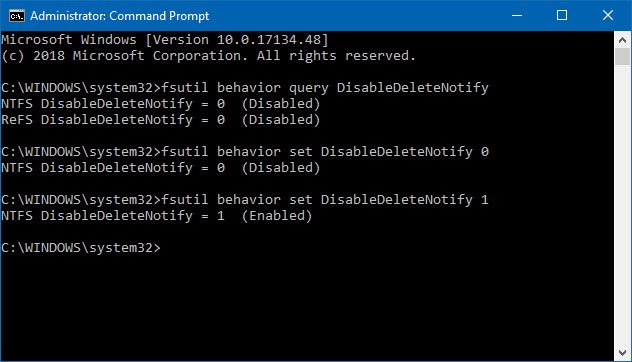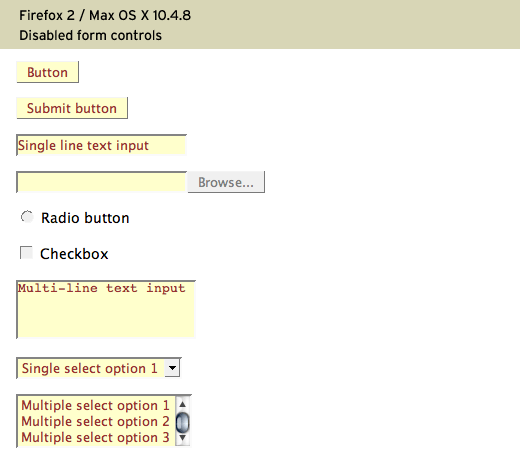

- #Fsutil disabledeletenotify how to
- #Fsutil disabledeletenotify driver
- #Fsutil disabledeletenotify windows 7
I did find also the article Enabling TRIM support in Windows 7 which details a method of finding if the firmware supports TRIM:īit 0 - Data Set Management Supported.
#Fsutil disabledeletenotify driver
It will be silently ignored by the disk driver or the disk firmware. To answer your other question: TRIM cannot affect non-SSD drives on the computer. If TRIM is not functional at the moment, it will become functional sometime in the future. Otherwise, the only thing left to do is to regularly check for new versions of the disk driver and firmware, to keep them up to date as much as possible. (I have not found any explanation of the value 48.) Who knows? You might actually find a difference in performance. You can use any of the disk benchmark programs that are found on the Web, to test disk performance with DisableDeleteNotify set to 0 or 48. If you find in the future that Write operations are too slow on the disk, then this means that it is not working. There are no benchmarks or other tests that really test the TRIM functioning of the disk driver or the firmware. However, there is actually nothing further that you can do to verify that it is actually working. Windows will send TRIM commands to the disk driver. So it seems that you have done all that is necessary in Windows. This only means that TRIM commands will be sent to the disk driver, which might either ignore it or send it to the firmware, which in its turn will either ignore it or use it to good effect. This answer remarks that "DisableDeleteNotify=0" means that TRIM is enabled in Windows. The SU thread How do I know if my SSD Drive supports TRIM discusses this same question.
#Fsutil disabledeletenotify how to
However, can anyone find a more recent page preferably from Microsoft detailing the TRIM support in Windows 7, and how to ensure that its both enabled & working? This page from Microsoft states how Windows 7 will support it. Is this all the proof I really need that the OS is using TRIM?Īlso, since this applies globally for the computer, is TRIM data being sent to the other hard drives connected to the computer? And if so, would this cause any degradation in disk performance?Īlso, because I posted the bounty, I want another quick thing answered.

When I run the query on fsutil, I get the following result:įollowing the instructions I found, I set this to 0 instead of 48. If it's not, then type:įsutil.exe behavior set DisableDeleteNotify 0Īfter a bit of searching on Google, I found similar results elsewhere (set DisableDeleteNotify to 0), which makes sense since for TRIM to work, the solid-state drive needs to be notified when deletes occur (for the garbage collector) unlike a normal hard drive). In Windows 7, go to start/run/cmd), type the following:įsutil.exe behaviour query DisableDeleteNotify How do I know if TRIM is enabled on my OCZ SSD?Ī. I was browsing through the Bible of OCZ SSDs, and noticed the following in Section 60-76 - Tweaks and TRIM: I am not noticing the speed gains I thought I would get, but that is an other issue entirely. I successfully installed Windows 7 onto the SSD, and everything seems to work fine (I'm still not sure how much faster, I'm still optimizing the system).

I also have three other SATA hard drives of assorted sizes for long-term data storage. I recently purchased a new solid state drive (an OCZ Vertex 2 (80 GB)) to use primarily for my operating system.


 0 kommentar(er)
0 kommentar(er)
